Airbus has already presented three possible layouts for its Zero-E hydrogen-powered aircraft, and now it comes up with a fourth: pods. And yes, it is definitely a new idea. Airbus is even patenting it.
It is possible that you’re wondering what exactly is new about an aircraft with its engines hanging under its wings. OK having six of them is a bit unusual, but not exactly unprecedented. However, if you’ve been paying attention to Airbus’ Zero-E programme, these pods represent a new way to solve a problem. Specifically, fuel storage.
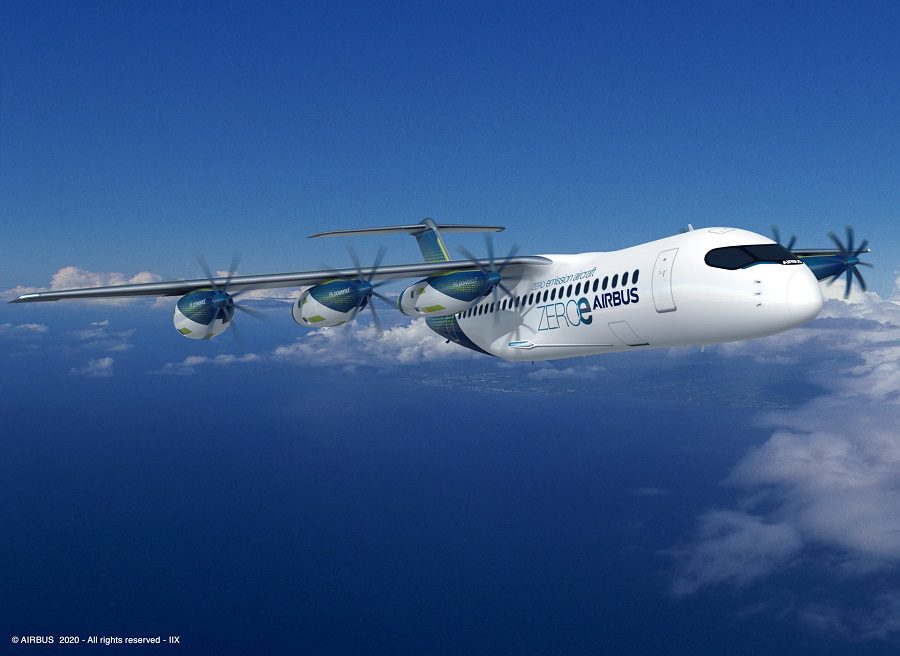
Each one of the pods in Airbus’ latest Zero-E concept has an electric motor in it. So this is a hydrogen fuel cell layout, rather than a turboprop that burns hydrogen. But the pods don’t just have a motor each. They also contain everything else the motor needs, to function. In essence, each pod is a complete, stand-alone propeller-driven propulsion system. It has:
- A propeller
- Electric motors
- Fuel cells
- Power electronics
- Liquid Hydrogen (LH2) tank
- A cooling system
- A set of auxiliary equipment
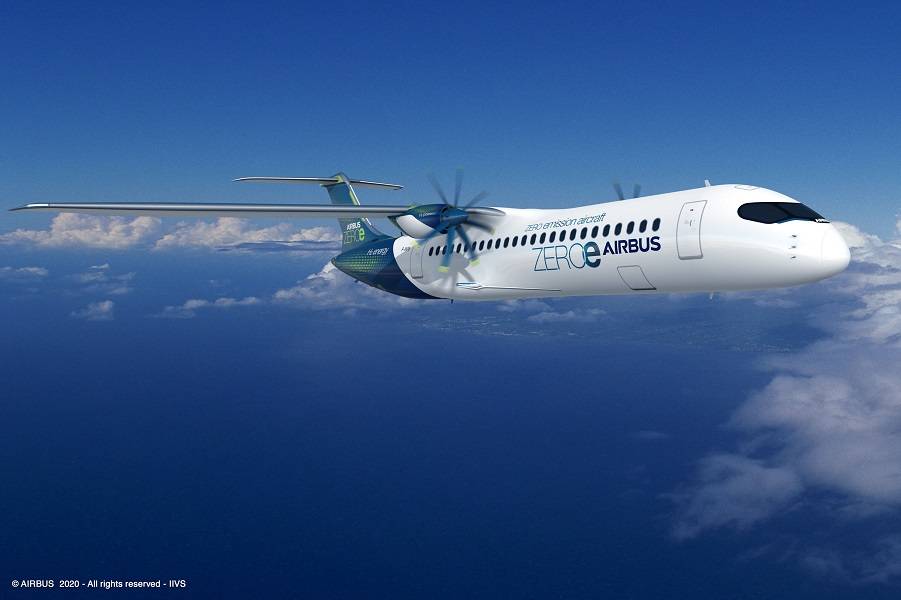
Zero-E Pods Vs Rear Tank: Airbus Preempts A Problem
Previous Airbus Zero-E hydrogen concepts, without such pods, had a very large hydrogen tank in the back of the fuselage. This was made obvious by the absence of passenger windows, and a rear cabin door positioned far forward. This created the space for the tank. However this setup has a potential problem.
Right now, practically all commercial aircraft store their fuel on wing tanks. If the plane has additional tanks in the fuselage, these too are close to the wing. This means that the weight of the fuel is very close to the centre of lift of the aircraft. And this means that as the fuel amount goes down, the centre of gravity (CG) of the aircraft doesn’t shift too much.
In contrast, a design where the fuel is stored right at the back, has some limitations. While hydrogen itself is quite light, even in liquefied form, its consumption would affect the aircraft’s CG much more. In practice, this would limit the amount of fuel the plane could carry. That’s a problem that the pods in this Airbus Zero-E concept solve. But not the only one.
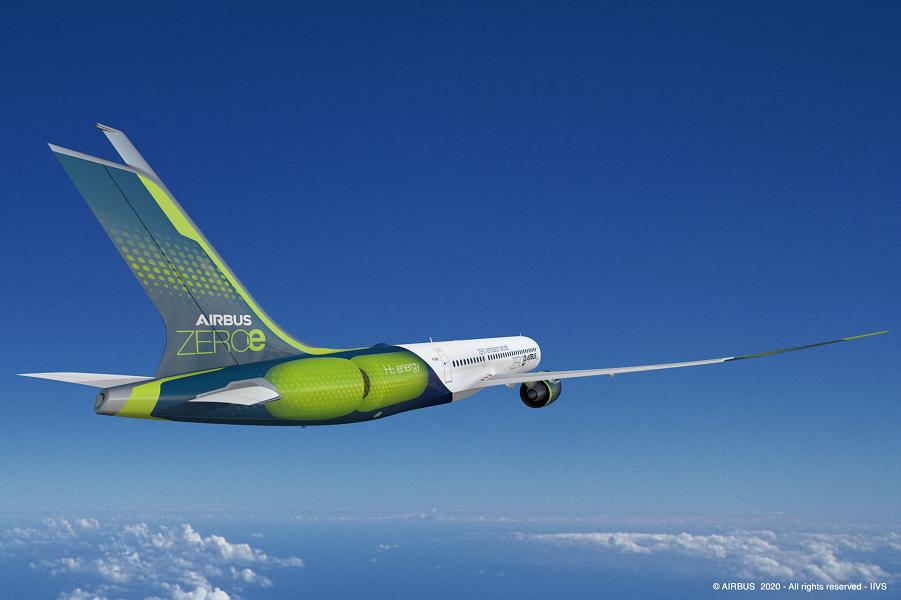
Refuelling With Hydrogen
Hydrogen needs to be kept in very low temperatures in liquid form. And this presents some challenges, when refuelling. Right now, aircraft get their fuel from trucks or built-in airport infrastructure. This may not so easy to do, with cold-stored fuel. Airbus decided to pre-empt this problem by making the pods in this Zero-E concept quick to remove and reattach!
A plane can come in at the gate, and as passengers disembark, crews can quickly detach each pod, attach new pods with fuel, and send the plane back on its way. Not only does this have the potential of speeding up turnarounds, it also solves a maintenance headache that all planes have. The pods can go to service facilities with the Airbus Zero-E is flying with other pods.
Planes only make money for the airlines when they are in the air. There will certainly be things on the rest of the aircraft requiring maintenance. By getting the motors and the other items in the pods out of the equation, Airbus greatly helps the airline and the Zero-E engineers and mechanics.
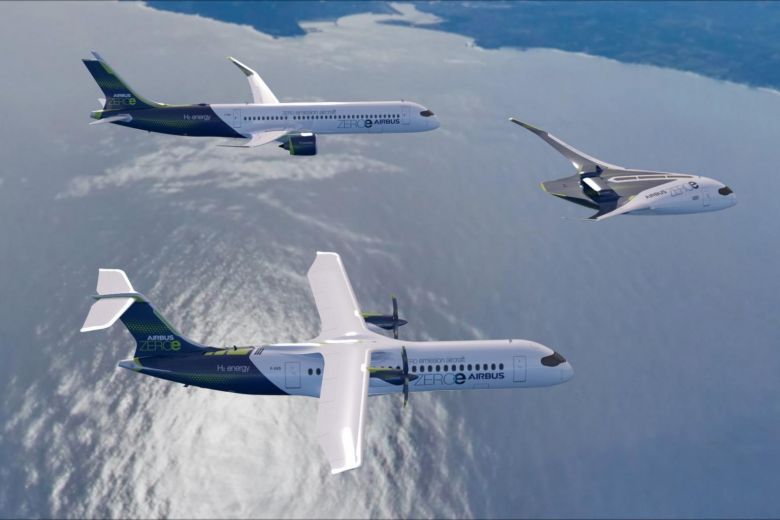
How Many Pods?
Finally, there’s the matter of payload and range, and how it varies. The aircraft in these Airbus Zero-E ‘pods’ concept images has 25 windows on each side. This probably equates to a 70-75 seater, in a 1-2 configuration. This is quite a bit more than any other hydrogen fuel-cell concepts we have seen. Many assume that hydrogen power at this scale will come in the form of hydrogen-burning jets and turboprops.
Airbus explains that the pods allow this Zero-E concept to be scalable. This implies that the aircraft could perhaps fly with only four pods in shorter trips, and/or with less payload. That would be quite a novel trick! And maybe another item in the pilots walk-around: verify that the aircraft has the correct number of engines…
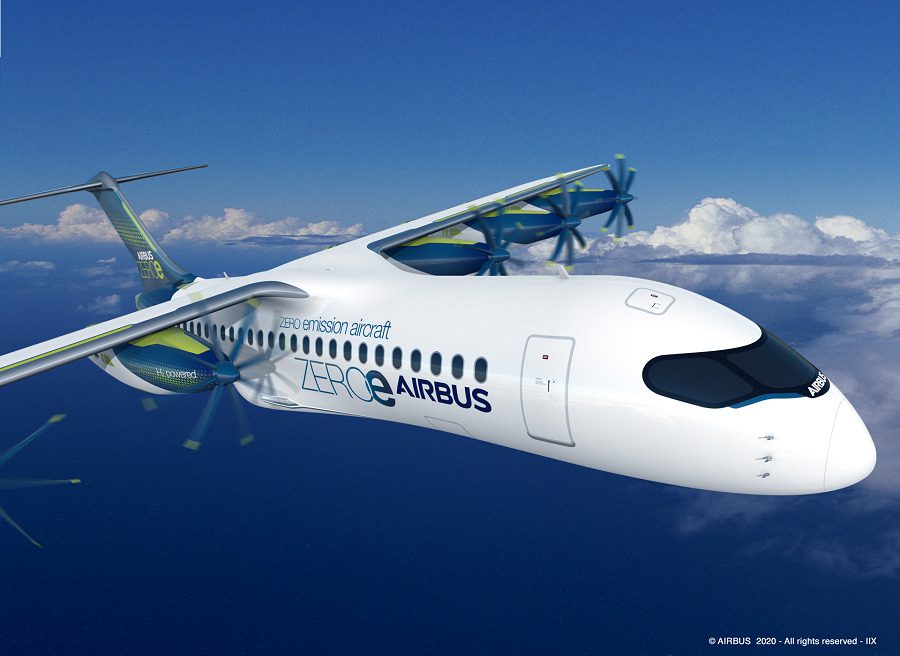
There are other questions we have, that Airbus hasn’t answered in its pods Zero-E concept page. Pressurization systems, electrics, hydraulics (if any)… all these are things the engines take care of, today. Designing a plane with quick-removable and varying numbers of engi… sorry, propulsion systems, is quite a departure.
Of course this is only one of many concepts of future aircraft. Airbus gives itself until 2035, for a working aircraft using these technologies. This of course means that these and other designs have time to evolve. But it’s giving us a taste of how interesting, and how different, the future can be!




3 comments
Grzegorz Olszewski
Hydrogen is much lighter than kerosene or any other fossil fuel. Actually it’s 14 times lighter than air. It should just quickly rise into atmosphere in case of any leakage.
Spyros
The same thing that happens with any crash, where fuel is involved.
Andre T
The Zero E is a total farce so Airbus can get government money to get through the COVID slowdown. This is mostly marketing knowing they could never get a safe certificatible commercial hydrogen powered aircraft. They may even go as far as design and build prototype. But a prototype would never see the vigorous cycles as commercial aircraft sees.
Simply what happens in a crash?